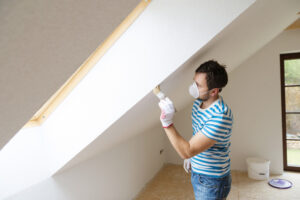
How many times have you set a budget just to run into additional expenses down the road? Most want to make and stick to a financial plan, but it can be complicated. Many pitfalls, like unexpected expenses, bad habits, and unplanned purchases, can completely derail even the best of intentions. To ensure you have set aside the right amount of money, consider pitfalls that might offset it.
Renovating vs. Moving
Deciding to renovate your home is both exciting and daunting. If you’ve spent months wanting to update the color of your walls or have been counting down the days until you can rip up an old carpet, then you’re probably eager to get started. Sometimes remodels are so expensive that purchasing a new house might seem cheaper than addressing the changes you want.
Most people would rather stay in their current property than purchase a new one. According to Live Oak Homes, 61% of people in the United States would rather renovate than move, mainly because they don’t want to uproot their families and disrupt their routines. Moving isn’t always bad, but it should only be done when necessary. To avoid falling further into debt, try to research more cost-effective ways to renovate your current property, such as finding contractors who fit into your budget or searching for discounts on paint colors.
Budget-Friendly DIY Projects
There are many DIY projects you can do yourself. Adding curtains to window features makes the space look bigger and yet feel more intimate, and peel-and-stick wallpaper is great if you’re renting or want to avoid committing long-term to a particular aesthetic. Bathrooms and kitchens are the costliest rooms to renovate, but they’re also the spaces that are the quickest to look dated. The cabinets you installed ten years ago might have seemed modern and timeless, but now they represent trends of the era, with colors and styles that are out of fashion. Rather than letting the cost intimidate you, make simple changes such as changing the color of your cabinets or switching your style of flooring to change your perception of the space.
According to Forbes, the average cost to paint kitchen cabinets is around $750, ranging from $400 on the low end to $1,250 on the high end. It doesn’t mean that the project will be cheap, but it’s a much better deal compared to the amount you’d pay to have brand-new cabinets put in. Take some time and research the colors you’d like and how they can match the aesthetic of the rest of your home.
Accounting for Unexpected Costs
As most homeowners know, many things can go wrong in a home. From inclement weather knocking down trees, pipes bursting, and many more, you’re guaranteed to run into issues at some point. While some things are unavoidable, a few strategies can lessen the damage.
Do you use thick toilet paper or flushable wipes? According to Reader’s Digest, many flushable wipes are not flushable and can cause significant damage to your plumbing system. Most consumers are unaware of this fact until their toilets start overflowing.
Plumbing issues can be costly, both regarding repairing the problem and because if you don’t have working toilets, you will probably have to stay somewhere else until things are resolved. Be mindful of what you’re flushing down the toilet, as even though the packaging might advertise that the product can be safely flushed, that might not always be the case. If you’re using flushable wipes, consider switching to regular toilet paper or disposing of them in a garbage bag as opposed to flushing them.
Setting a budget and sticking to one are two very different things. If you consider the costs you may incur with home renovation when you set aside the money, projects will be more enjoyable and less stressful. Be sure to talk with professional contractors or home designers to understand more about the cost-effective changes you can make to your home.